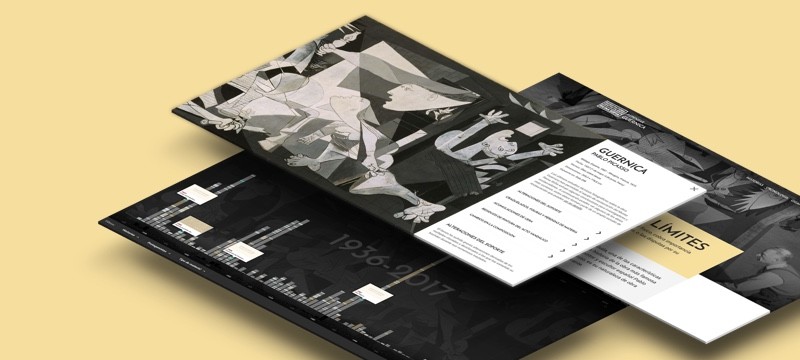The Spanish Pavilion at the International Exhibition of Art and Technology in Modern Life, Paris, 1937
In the autumn of 1936, the government of the Second Republic regarded participation at the Paris World’s Fair as indispensable, despite the horrific war tearing Spain apart, in its endeavour to verify the Republic’s political project and its will to work for the progress of the nation. The pavilion represented at once an international showcase of the Republic’s cultural politics and an efficient propaganda machine. Picasso’s Guernica, mounted on one of the closing walls on the ground floor, was recognised as the Spanish people’s cry of pain.
The pavilion, as an exhibition and propaganda device, was the outcome of the ongoing efforts of at least three figures: the general curator – first Carlos Batlle de la Barella, succeeded by José Gaos; the director general of Fine Arts, Josep Renau, who came up with the whole propaganda programme and whose photomontages were the skin wrapped around the building and the arteries coursing through it; and the architects Luis Lacasa and Josep Lluís Sert, who conceived a modern-structured building - the simple lines, the deployment of basic materials and the scale all had a hand in turning this building into a predominantly anti-monumental pavilion. Its functional character came from the arrangement of free spaces for exhibiting and the solutions of vertical and horizontal circulation.
Although formulated as a unit of propaganda, its content can be divided up into three groups: a programme of photomontages; specific commissions by renowned artists who supported the Republic and whose works placed the war – explicitly or implicitly – at the heart of their themes and iconography; and folklore and popular traditions. The latter group spread out into the stage erected in the courtyard, the setting for musicians, dance groups and regional choirs to perform, in addition to film and documentary screenings such as Luis Buñuel’s Espagne 1936. The pavilion also paid homage to deceased writers and authors who died defending the nation and freedom, for instance Federico García Lorca, Emiliano Barral and Francisco Pérez Mateo.
Renau’s photomontages comprised the greatest expression of the use of photography behind a political programme and Spanish propaganda, synthetically and effectively addressing different fundamental issues for the Republic: education reforms, the organisation of the army, the uniqueness of Spain through its regional dress, heavy industry and farming, Pedagogical Missions, the defence of artistic heritage, and the press and its role during wartime. Yet Picasso’s Guernica, Mercury Fountain (which included the text “Almaden”, written at the top in copper wire) by Alexander Calder, one of the few international artists at the pavilion, and Joan Miró’s The Catalan Peasant in Revolt – a work painted directly onto panels on the interior stairwell, of which only photographic records remain – rose up as the most powerful images of violence and rage against fascism.




